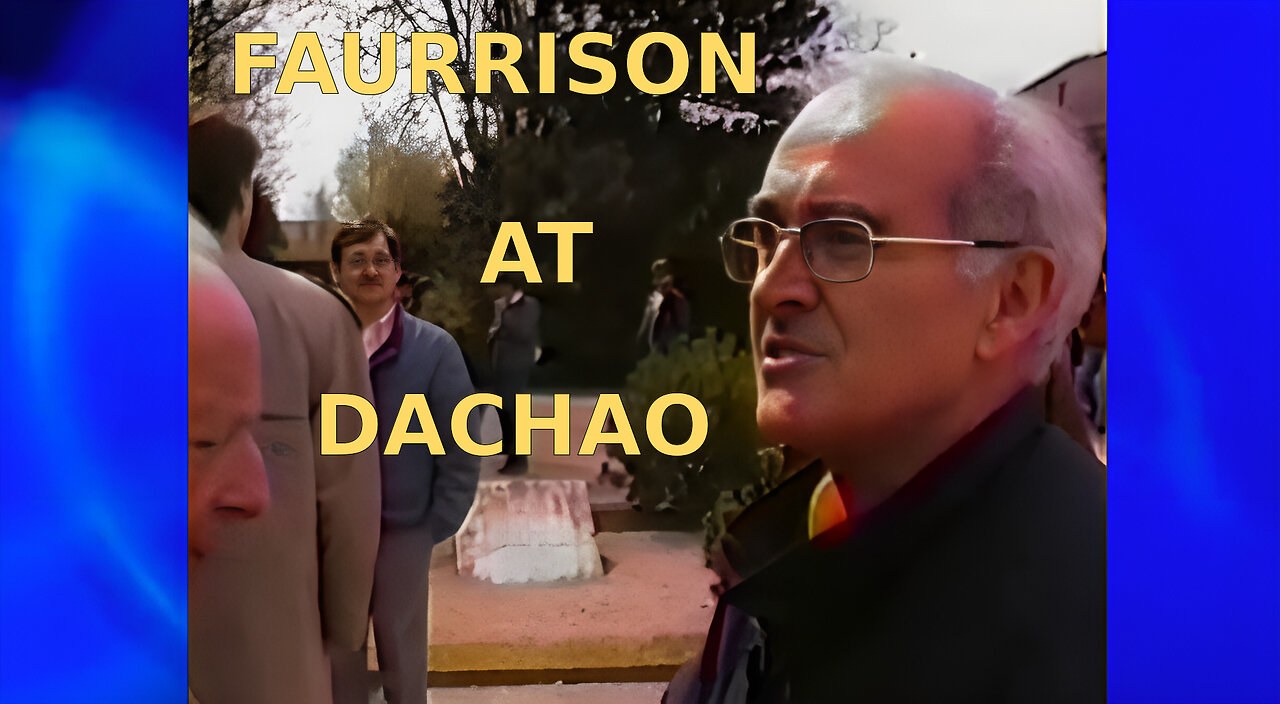Premium Only Content

Dr. Prof Robert Faurisson ~Faurisson In Dachao
At the beginning of the camps, the Germans due to inexperience, in particular concerning potential medical conditions arising in such a dense population that were totally unexpected. A huge surge in the growth of lice infestation the main problem, Cockroaches appearing in large numbers as well as flies and in Poland mosquitoes spreading disease. Eventually these setbacks, after a learning curve, were overcome, only to return with vengeance at the end of the war when the allies bombed rail and road links to the camps to prevent medicine and food reaching the inmates in order to prepare for 'the days of liberation' when Hollywood film crews would arrive to film 'the Holocaust' for fake newsreels spread all around the globe through cinemas.
Faurisson wrote, "Auschwitz thereupon became the centre of a complex of nearly 40 camps and subsidiary camps, as well as the capital of a vast agricultural and industrial complex (including mines, petrochemical works, and munitions factories) where numerous prisoners, particularly Polish and Jewish prisoners, worked side by side with civilian workers. At the same time, or successively, Auschwitz was a prisoner-of-war camp, an important transit camp, a hospital camp, a concentration camp, and a camp of both forced and free labourers. It was never an "extermination camp" (a term invented by the Allies).However, typhus, which was endemic in the population of Polish Jews and Russian prisoners of war, along with typhoid fever and other epidemics, wrought havoc within the concentration camp population, both in the camps proper and in the town of Auschwitz, even among the German physicians and the civilian population. And this in spite of drastic hygienic measures and a multiplicity of hospital buildings and facilities, equipped at times with the latest in German medical science. Thus it came about that over the total period of the camp's existence – that is, from May 20, 1940 to January 18, 1945 – the epidemics, in combination to be sure with the terrible working conditions in that marshy area, and with hunger, heat and cold, led to the death of probably 150,000 prisoners."
http://www.ihr.org/jhr/v16/v16n4p14_Faurisson.html
Numerous other bits and pieces from other revisionists were added to this by the original maker of this paricular video, and one begs the patience of those in the choir who have seen most of them already.
-
 5:44:49
5:44:49
Redacted News
9 hours agoTurning the Tide: 9/11 Justice in 2025 — Day 1 with Sen. Ron Johnson, Richard Gage and More
165K71 -
 2:48:00
2:48:00
TheSaltyCracker
7 hours agoYou're Being Hunted ReeEEStream 9-10-25
271K556 -
 13:09:56
13:09:56
LFA TV
20 hours agoBREAKING: CHARLIE KIRK ASSASSINATED - WEDNESDAY 9/10/25
364K123 -
 1:31:08
1:31:08
I_Came_With_Fire_Podcast
7 hours agoCheck Fire: God Bless Charlie Kirk
78.6K22 -
 1:13:35
1:13:35
Glenn Greenwald
9 hours agoCharlie Kirk Assassinated; NATO Alleges Russian Drones Flew Over Poland, and More | SYSTEM UPDATE #512
276K283 -
 1:46:28
1:46:28
Badlands Media
22 hours agoAltered State S3 Ep. 45: The Assassination of Charlie Kirk
151K20 -
 8:56:53
8:56:53
Dr Disrespect
15 hours ago🔴LIVE - DR DISRESPECT - THE FINALS - NEW SEASON 8 LAUNCH EVENT W/ THE SHOTTY BOYS
275K10 -
 LIVE
LIVE
RealAmericasVoice
3 days agoHOME OF REAL NEWS
3,083 watching -
 27:00
27:00
BonginoReport
10 hours agoRest In Peace Charlie Kirk - Nightly Scroll w/ Hayley Caronia (Ep.131) - 09/10/2025
257K391 -
 1:20:06
1:20:06
Kim Iversen
10 hours agoRIP Charlie Kirk: When Words Fail, They Reach for Guns
183K330